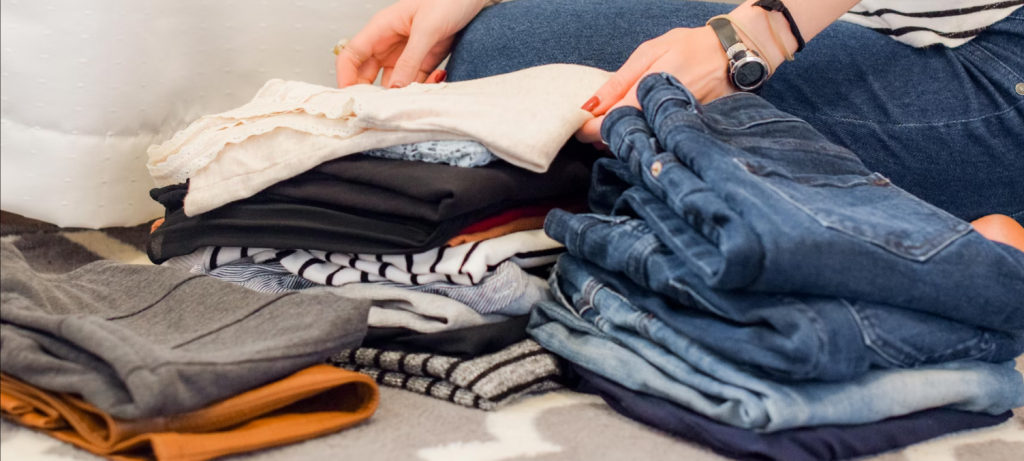
Introduction: Why Capsule Wardrobes Make Sense
We’ve all stood in front of a closet packed with clothes and thought, “I have nothing to wear.” Sound familiar? That’s where the magic of mix-and-match fashion comes in. By investing in a few well-chosen key pieces, you can build a versatile wardrobe that works harder and looks better—without buying more. Let’s unpack how a little strategy can lead to a lot of style.
What Is a Mix-and-Match Wardrobe?
A mix-and-match wardrobe, sometimes called a capsule wardrobe, is a collection of essential clothing items that can be combined in numerous ways to create different outfits. The goal is to maximize variety while minimizing clutter.
The Key Benefits of Mixing and Matching
- Save Time: No more wardrobe panic in the morning.
- Save Money: Fewer pieces, more combinations.
- Reduce Waste: Less impulse buying and fast fashion.
- Boost Confidence: Consistent style that reflects you.
Start with the Basics: Foundation Pieces That Work
To build a strong mix-and-match wardrobe, you need to start with staples. These are the pieces you can wear again and again, with endless variation.
1. Neutral Tops
Think white button-downs, simple tees, black turtlenecks—these go with everything.
2. Well-Fitted Bottoms
Invest in classic jeans, tailored trousers, and a versatile skirt in neutral tones.
3. Classic Outerwear
A structured blazer, a trench coat, and a denim jacket offer function and flair.
4. Footwear Fundamentals
Neutral-tone loafers, ankle boots, white sneakers—they ground every look.
5. Multi-Season Dresses
Pick a dress that can be worn solo in summer or layered in winter.
Choosing a Color Palette That Works for You
Your wardrobe will mix better if you stick to a color palette. That doesn’t mean boring—it means strategic.
- Base colors: black, navy, beige, gray
- Accent colors: blush, rust, forest green, mustard
- Pops of color: choose 1–2 statement hues for accessories or bold items
Texture and Print: Add Personality Without Chaos
Even in a minimalist wardrobe, you don’t have to shy away from prints or rich textures. The trick is moderation.
- One print per outfit (e.g., striped tee with solid pants)
- Mix textures: cotton + leather, denim + silk, linen + knit
How to Build Multiple Looks from a Few Items
Let’s say you own:
- 3 tops
- 2 bottoms
- 1 jacket
- 1 pair of shoes
That’s already 12+ unique combinations. Now throw in a scarf or a belt? You’re up to 20+. Think in terms of layers, contrast, and accessories.
The Power of Layering
Layering turns simple outfits into standout looks. A slip dress becomes a skirt under a sweater. A button-up shirt goes under a vest. A summer top pairs with a blazer and scarf in fall.
Accessorizing Smart: The Outfit Transformer
Belts, scarves, jewelry, and bags can change the tone of any look. A silk scarf can make jeans and a tee feel Parisian. Statement earrings elevate a plain dress into evening wear.
From Office to Weekend: Switching Up with the Same Pieces
- Office look: blazer + blouse + tailored trousers + loafers
- Weekend look: same blouse + jeans + sneakers + crossbody bag
- Date night: blouse + skirt + ankle boots + bold lipstick
Seasonal Adaptability: Dress Year-Round with Fewer Pieces
Make your clothes work harder with layering:
- Add tights under skirts for winter
- Swap sandals for boots in fall
- Use a thermal top under your summer dress in cooler months
Common Mistakes to Avoid When Mixing and Matching
- Too many trend pieces = little cohesion
- Ignoring proportions (e.g., loose + loose can feel sloppy)
- Buying without a plan (ask: does it match 3+ things I own?)
Mix-and-Match Travel: Pack Light, Dress Sharp
Planning a trip? Choose 10–12 items that all go together and rotate accessories. You’ll look polished every day without lugging a massive suitcase.
How to Refresh Your Mix-and-Match Wardrobe Without Shopping
- Try outfit challenges (e.g., 10 items, 10 days)
- Borrow or swap with friends
- Reorganize by color or category for new inspiration
Conclusion: Style Is a Strategy, Not a Shopping Spree
Creating a mix-and-match wardrobe isn’t about limitations—it’s about creativity, clarity, and confidence. With a handful of key pieces and a little imagination, you can style dozens of outfits that feel fresh, intentional, and entirely you. Less really is more.

FAQs
Q1: How many pieces should I have in a capsule wardrobe?
Start with around 30–40 items (including shoes and outerwear), then adjust based on your lifestyle.
Q2: Can I mix prints in a minimal wardrobe?
Yes, just keep it balanced. Pair a bold print with a neutral or subtle texture.
Q3: Is it okay to have duplicates of basics?
Absolutely. Having two white tees or a couple of jeans in different fits adds flexibility.
Q4: What if I get bored with my wardrobe?
Use accessories, styling tweaks, and layering tricks to keep things fresh—or borrow/swap with friends.
Q5: Does mix-and-match work for formalwear too?
Yes! A tailored blazer, sleek dress pants, and a few elegant tops can create multiple polished looks for work or events.






